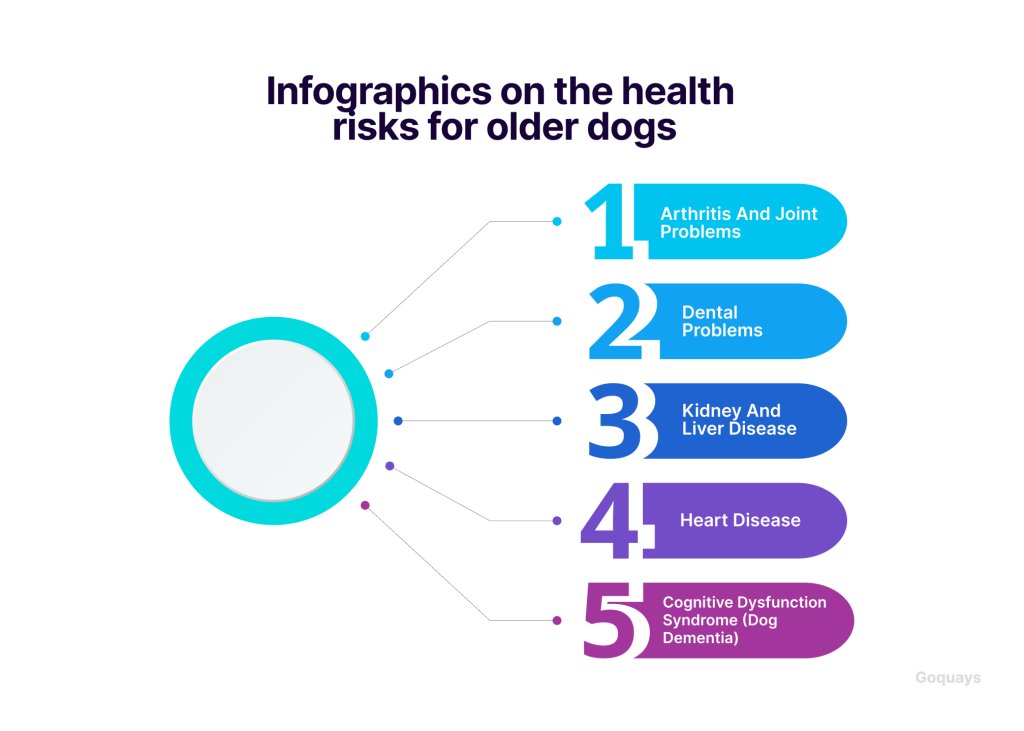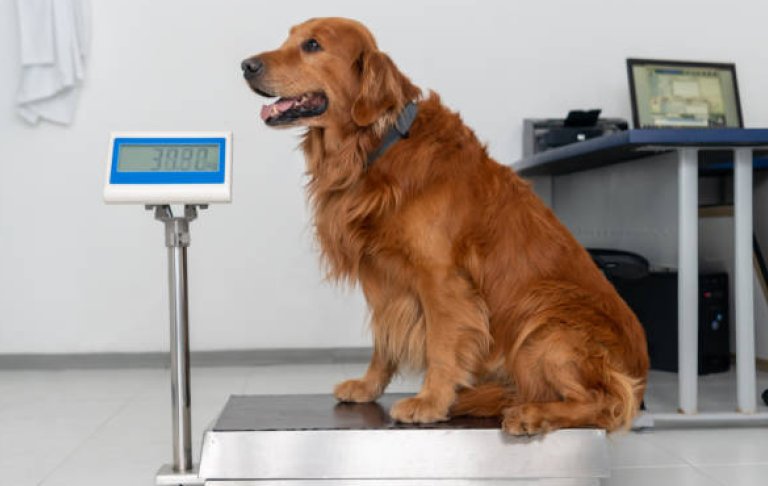As our beloved dogs grow older, their needs change, they require extra care, regular vet visits, and sometimes specialized treatments. If you have multiple older dogs, managing their healthcare costs can become overwhelming. That’s where multi-pet insurance for elderly pets comes in. At Quays, we recognise the unique care older pets deserve, and our specialised multi-pet insurance helps ensure your beloved pets have the best coverage without putting unnecessary strain on your finances.
Health risks that affect older dogs, the several kinds of coverage that are available, typical health risks, factors that affect insurance for older dogs, and how to select the best policy are all covered in this article. Let’s get started and give you and your elderly family members peace of mind!
We will explore the different aspects of insurance for older dogs. It is important to know that, as our canine friends age, their healthcare needs change, necessitating the consideration of customised insurance options. For households with multiple senior dogs, understanding multi-pet insurance becomes even more important.
When is a Dog Considered “Old”?
Dogs have different life stages just like humans and as they get older, their physical and medical requirements change. However, at what point in time is a dog deemed “old”? A number of variables, such as breed, size, and general health, are considered.
A dog is classified as old based on its breed and size. Generally, smaller breeds like Chihuahuas and Dachshunds enter their senior years around 9-10 years old, while larger breeds like Great Danes and Mastiffs may be considered senior by 6-7 years. Recognizing this transition is vital, as it influences healthcare and insurance considerations. Here are some of the considerations:
Breed and Age Considerations
Not every dog ages at the same pace. Larger breeds age more quickly and attain senior status sooner, while smaller breeds often live longer and age more slowly. Based on breed and size, the following is a basic guide to when a dog is deemed senior:
- Small breeds (such as Pomeranians, Dachshunds, and Chihuahuas) around 9 to 10 years old
- Medium Breeds: (e.g., Border Collies, Cocker Spaniels) around 8 to 9 years old
- Large breeds: such as German Shepherds, Labradors, and Golden Retrievers, around 6 – 7 years old
- Giant breeds, such as Saint Bernard’s and Great Danes: approximately 5 – 6 years old
Because aging is influenced by lifestyle and heredity, some dogs may exhibit symptoms of aging sooner or later than anticipated.
Signs That Your Dog is Getting Older
In addition to age, there are signs to show that your dog is approaching their later years. They may exhibit some physical and behavioural changes. These could include:
- Slower movement and lower energy — Your once-active dog might move less excitedly and take longer sleeps.
- Stiff joints and mobility problems: Joint troubles and arthritis are becoming more prevalent.
- Grey fur and texture changes: Ageing can be evident in greying fur around the muzzle and in changes in coat thickness.
- Alterations in appetite and digestion: Older dogs may need specific diets or have more sensitive stomachs.
- Hearing and vision loss: Older dogs often have diminished senses.
- Changes in behaviour: Cognitive decline may manifest as confusion, anxiety, or irregular sleep patterns.
Why It Is Important to Know Your Dog’s Age for Insurance
Since many pet insurance policies have age restrictions, it’s important to know when your dog becomes a senior. While some providers may not cover pre-existing diseases, others may impose higher age limits on new insurance. Early multi-pet insurance coverage for elderly dogs guarantees the best treatment possible without putting you under financial strain.
What are the Health Risks for Older Dogs?

As dogs get older, their bodies begin to change and this can increase their vulnerability to health problems. To preserve their quality of life, elderly dogs need additional care, frequent veterinary examinations, and even specialised treatments, just like human beings. Pet owners can take preventative measures to maintain the happiness and health of their furry friends by being aware of these common health issues.
Arthritis and Joint Problems
Arthritis, a disease that causes inflammation in the joints and results in stiffness, pain, and decreased movement, is one of the most prevalent health issues affecting older dogs. Joint-related problems like hip dysplasia and osteoarthritis are more common in larger breeds, like Labradors, German Shepherds, and Great Danes. Some symptoms of arthritis include; having trouble standing or lying down, not wanting to jump or climb stairs, Limping, and favouring one leg over the other. Multi pet insurance for older dogs can help offset the costs for joint supplements, physiotherapy, arthritis drugs, and even surgery if necessary.
Dental Problems
As dogs age, their dental health usually deteriorates, increasing the risk of infections, gum disease, and tooth decay. Because oral bacteria can enter the bloodstream, poor dental hygiene can exacerbate more serious conditions including heart and renal illness. Some signs of poor dental health include; bad breath which is a sign of gum disease, difficulty in chewing, red or bleeding gums, and missing or loose teeth. Some pet insurance policies cover treatments for dental treatments such as tooth extraction and cleaning.
Kidney and Liver Disease
Kidney or liver issues are more common in older dogs and can be brought on by ageing, genetics, or long-term medication use. Kidney and liver disease symptoms include; increased thirst, frequent urination, weight loss, appetite loss, diarrhea, vomiting, and lethargy. Chronic conditions may require continuous treatment, prescription diets, and medication, all of which can be costly. Multi pet insurance that covers long-term illnesses ensures that your dog gets the necessary care without financial strain.
Heart Disease
Heart issues like congestive heart failure (CHF) are common in older dogs. Symptoms include; persistent coughing, difficulty in breathing, fatigue, and swollen belly due to fluid retention. Having the ideal multi pet insurance ensures that you dogs can get medications and even surgery if required to manage the disease effectively.
Cognitive Dysfunction Syndrome (Dog Dementia)
Some elderly dogs have cognitive impairment, which is comparable to Alzheimer’s in humans. The following are some of the symptoms; disorientation (such as looking at walls or becoming confused in familiar areas), changes in sleep pattern, increased anxiety, clinginess, and forgetting house-training rules.
Although there is no cure for this condition, having insurance can help ameliorate the impact by paying for things like behavioural therapy, supplements and drugs that can help your dogs live better lives.
Why Multi Pet Insurance for Older Dogs is Essential

Multi-pet insurance policy guarantees that all of your senior pets are covered without incurring excessive vet fees, as older dogs are more likely to develop chronic illnesses and have unexpected medical emergencies. The ideal policy should provide coverage for; funding for ongoing medical care and prescription drugs, availability of senior pet care specialists and peace of mind knowing that you can provide the furry members of your family the best care possible.
Choosing the Right Pet Insurance for Your Older Dogs
As dogs grow older, their healthcare requirements become increasingly complex, therefore purchasing pet insurance is crucial. But not all insurance plans treat elderly pets in the same manner. While some providers modify coverage to account for age-related health concerns, others restrict new policies based on age. Selecting the right plan to safeguard your dog can be made easier if you are aware of the many kinds of coverage that are available for older dogs.
Lifetime Policies
Lifetime pet insurance provides continuous protection for your pets as long as you renew the premium annually. Because senior dogs are more likely to develop chronic problems, this type of policy is especially advantageous for them. It covers ongoing medical conditions year after year. It also covers prescription drugs, long-term disease treatments, and veterinary consultations.
Time-Limited Pet Insurance
This type of pet insurance provides coverage for a particular illness for a maximum of 12 months following the date of the diagnosis or until the limit amount is reached, whichever comes first. This is a more budget-friendly option but it may not be the best choice for older dogs with long-term illnesses.
Maximum Benefit Pet Insurance
Maximum benefit insurance sets a financial limit for every health condition. Other unrelated illnesses can still be claimed, but if the limit is reached, the condition will no longer be covered. It covers for diagnostics, treatments, surgeries, and medications. Claims are valid until the financial maximum is achieved, it is a mid-range option between time-limited and lifetime policies. Because chronic conditions often surpass financial restrictions over time, this policy might not offer adequate coverage for senior dogs with long-term medical concerns.
Accident-Only Cover
Accident-only pet insurance is the least expensive kind and only covers injuries from accidents, like wounds, broken bones, or poisoning. This policy does not cover age-related ailments or illnesses. It is only suitable for dogs who are generally healthy but prone to mishaps. Older dogs are more likely to need medical attention for age-related ailments, therefore accident-only insurance is less appropriate for them because it does not cover illnesses or chronic conditions.
Pre-existing Conditions
Pre-existing conditions are often excluded from typical pet insurance policies, so your pet’s pre-existing illnesses will not be covered. Nonetheless, some providers now provide pre-existing condition policies that provide peace of mind for dog owners whose dogs have already been diagnosed with conditions like diabetes, arthritis, or heart disease. It’s crucial to carefully examine the terms of these policies because they usually have higher premiums and limitations on the conditions they cover.
Key Considerations When Insuring Your Older Dogs
Age of the Dog
The age of the dog at the time of enrolment is one of the most important criteria affecting pet insurance coverage. It is more difficult to obtain coverage for elderly pets since many insurers impose age restrictions on new policies. It is advisable to sign up for a complete plan early in your dog’s life and stick with it throughout.
Pre-existing Conditions
Pre-existing conditions identified prior to the policy’s inception, are often not covered by pet insurance coverage. Pre-existing conditions include, for instance: diabetes, heart disease, hip dysplasia, and arthritis. If a pet has been symptom-free for a predetermined amount of time (such as 12 to 24 months), some insurers will provide limited coverage for pre-existing conditions. Look for insurance companies that provide partial coverage or specialised plans for continuing medical care if your dog has a pre-existing ailment.
Coverage Limits and Exclusions
Many pet insurance policies limit the treatments and conditions that are covered, reducing coverage for older pets. Chronic diseases may still be covered by lifetime policies; however, the yearly benefit level may be capped. Opt for insurance that offer comprehensive illness coverage and no upper age limit. Carefully read the tiny print of the policy to understand any restrictions for older pets.
Premium Costs and Excess Fees
Premiums for older dogs tend to be higher than that of younger dogs because insurance providers anticipate higher medical expenses. In exchange for reduced monthly premiums, some insurers offer higher excess fees. You can also save money up front by selecting a co-payment plan, in which you split a portion of the veterinary fees.
Waiting Period for Coverage
Most pet insurance providers impose a waiting period before coverage kicks in, especially for older dogs. If your dog is aging, avoid coverage gaps by renewing policies on time.
Finding Affordable Multi Pet Insurance Cover
When shopping for insurance for your older dogs, it is important to start early, insuring your dogs before they reach a certain age will offer better coverage. Also compare providers as they have varying limits, exclusions and pricing. Quays offers affordable and reliable multi pet insurance for your older dogs, guaranteeing your peace of mind and the health of pets.
In conclusion, the specific health demands of older dogs must be carefully considered when navigating multi-pet insurance. You must ensure that your older pets have the protection they need by knowing when a dog is deemed senior, identifying health risks, investigating different coverage options, identifying variables that affect insurance, and carefully comparing plans.





